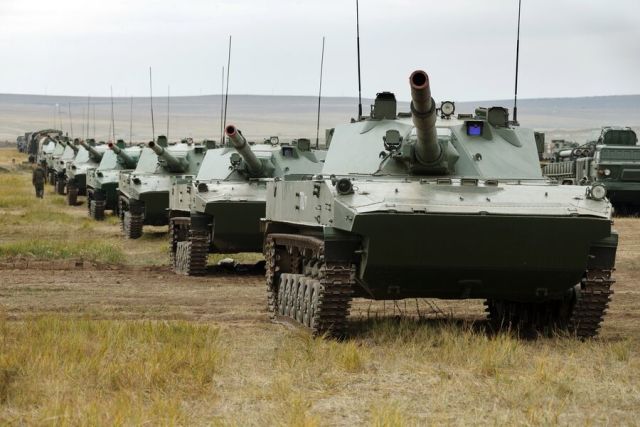General Shpak explained why the appearance of the Octopus-SD installation at the Airborne Forces will be a "historic event"
The Airborne Forces will soon receive a modernized 125-mm self-propelled artillery gun 2S25, known as the "Octopus-SD". "Newspaper.Ru" figured out why this self-propelled gun is needed by amphibious troops.
Tests of the 2S25 self-propelled anti-tank gun, which managed to get the name "Octopus-SD", have been carried out since 2018. They took place in the amphibious forces, where the gun was placed on the chassis of the BMD-4M, as well as on the basis of the BMP-3. The development of the machine was carried out by JSC "Tsniitochmash", which is part of the Rostec Corporation system.
As Vladimir Artyakov, deputy head of Rostec, told reporters, "state tests of the modernized 2S25 self-propelled gun have been completed, and its mass deliveries to the troops will be carried out in the near future."
According to him, the ACS 2S25 is an armored tracked swimming vehicle with a powerful artillery and missile system. "This self-propelled gun is capable of overcoming water obstacles and simultaneously firing on the move. The machine can conduct combat operations in the highlands, swampy terrain, in tropical and Arctic climates," Artyakov stressed.
"The main requirement of the Ministry of Defense for the new ACS is to increase the basic combat characteristics through the use of new equipment, primarily sighting devices and fire control devices. What is important is that the chassis of the self-propelled gun should be unified with other armored vehicles of the amphibious forces," he told the newspaper.Ru" member of the Board of Military Experts Sergey Belousov.
Armor penetration reaches 770 mm of armor under dynamic protection. Plus, there are guided anti-tank missiles in the ammunition.
The speed of the self-propelled gun is 70 km / h on the highway and on the ground surface, while afloat the car moves at a speed of 7 km/ h. The combat compartment of the ACS has also undergone modernization, where a new fire control system has been installed, including with combined sights with television and thermal imaging channels.
The gun is equipped with an automatic loader, which independently feeds separate loading ammunition of the required type into the chamber. The standard ammunition is 40 shells, which are on board at the time of landing and are ready for use as soon as the crew takes their seats.
"The course of the military special operation in Ukraine shows that the paratroopers need heavy weapons, large caliber," he told the newspaper.Ru" former commander of the Airborne Forces, Colonel-General Georgy Shpak. - Our troops have always been focused on mobility and the ability to deliver military equipment to the battlefield by parachute, which somewhat reduced the combat potential due to restrictions on the weight of the landing equipment. Now the airborne forces can use tanks and heavy artillery systems, which are transferred either by land or by military transport aircraft, which does not lose efficiency. At the same time, it remains necessary to use parachute landing of large-caliber weapons capable of "hacking" the enemy's defenses, but sufficient in weight to use multi-dome or parachute-jet systems."
The general added that "any of the commanders of the Airborne Forces dreamed of having in their arsenal a mobile heavy weapon capable of supporting the landing with fire at the landing site, repelling the enemy's attack and developing the offensive themselves."
"A breakthrough can be called the beginning of serial production in 1981 of the 120-mm divisional-regimental airborne self-propelled artillery and mortar installation 2S9 "Nona-S". With its appearance in service, the Airborne Forces significantly expanded their combat capabilities - the new gun could fire both direct fire and mounted trajectory. The appearance of the new Octopus-SD system is also a historic event. The landing force really needs such machines," Shpak concluded.
Victor Sokirko

